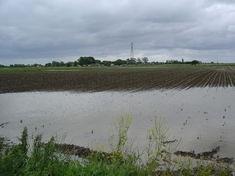


It certainly wouldn’t have felt like it to growers whose crops succumbed to frosts, snow and rain storms, but 2007 was officially the second warmest year in the UK on record. According to figures released by the Met Office, he average temperature across the UK was 9.6°C. This was down on 2006, the hottest year on record, but a continuation of the trend believers like to call global warming.
Nine of the 10 warmest years recorded since UK-wide measurment was introduced in 1914 have occurred since 1989. 2007 was a degree higher than 30-year average from 1971 to 2000.
However, many people, including growers, will look back on the 2007 weather patterns as extreme. Enormous amounts of rain in May, June and July caused devastating floods, but in other months it was drier than usual. There were, believe it or not, 18 days fewer frosts than normal.
"To the public it seemed like a very dull and cool year because we didn't get a heatwave," Met office climate scientist Dr Matt Huddleston told BBC Online. "But the warm night temperatures and the lack of frosts mean on average it was a very warm year.
"There is an inexorable rise in temperature that is small compared to daily weather changes," he said. "There is much greater certainty that this is because of manmade pollution."
The year began with a weak El Nino, a phenomenon that normally raises global temperatures. But since the end of April 2007, its cooler relation, the La Nina, has prevailed, taking some of the heat out of what could have been an even warmer year.
There will be no let up in 2008, as the Met Office expects another warm year, with global temperatures forecast to be 0.37°C above the long-term average.



